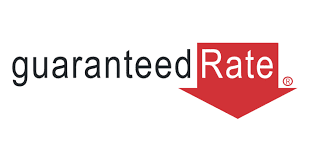The LendingTree refinance calculator helps you determine if it’s worth it to replace your current loan with a new one. It costs money to refinance a home, and with a few inputs you the refinance calculator shows you if the benefit is worth the cost.
How to use a mortgage refinance calculator
You’ll need to have some information about your current mortgage handy to get the best refinance calculator results. You’ll also need to add information about the new mortgage you’d like to apply for.
Your current mortgage information
- Original amount: Start by entering how much you originally borrowed on the loan you’re refinancing.
- Loan Start Date: Next add the date your current loan started. This information should be on your monthly mortgage statement.
- Loan term: You can choose a 30- or 15-year term.
- Interest rate. Enter your current interest rate (also on your current mortgage statement)
Your new mortgage information
- Loan term: Choose between a 30- or 15-year term.
- Interest rate: Add the interest rate you’d like. Check current refinance rates for more precise numbers.
- Lender & Title Fees: Our calculator automatically assumes refinance closing costs equal to 2% of your new loan amount — actual costs may range between 2% and 6% of your loan amount.
- Length of Ownership: Make sure you enter how long you plan to live in your if it’s more than five years — if you don’t, your refinance breakeven point won’t be accurate.
Understanding the refinance calculator break-even point
Your refinance break-even point is how long it takes to recoup the closing costs you incur on your refinance. For example, if you can save $200 per month by refinancing, but pay $6,000 in costs to get the savings, your break-even point is 30 months ($6,000/$200 = 30 months). If you stay in the home at least 30 months, you’ll save money by refinancing. If not, skip the refinance.
Our refinance calculator will provide two recommendations based on the breakeven point results:
- Refinance makes sense. You’ll breakeven before you plan on moving. This means the refinance is worth it.
- Refinancing makes sense if you plan to stay for more than “x” years. You’ll not break even before you plan on moving. I’ts best to skip your refinance plans for now with this warning. The “X” will feature a number that tells you how long you need to stay in your home.
What is a mortgage refinance?
A refinance is a process that involves paying off your current mortgage and replacing it with a new home loan. The most common reason to refinance your mortgage is to lower your interest to reduce your monthly payment.
 Learn more about refinance mortgage requirements
Learn more about refinance mortgage requirements
Should I refinance?
A refinance makes the most sense if:
- You can lower your interest rate. Beside saving on your monthly payment, a lower rate can save you thousands of dollars in interest charges over the life of your loan.
- You want to pay your loan off faster. If you can swing the higher payment, switching from a 30-year to a 15-year mortgage means you’ll be mortgage free much faster.
- You’re nervous your adjustable-rate mortgage payment is going up. If the teaser rate on your adjustable-rate mortgage (ARM) rate is headed north, refinancing to a fixed-rate may give you peace of mind.
- You want to tap some equity to pay off debt or improve your home. Convert some home equity to cash with a cash-out refinance and pay off credit card balances or spruce up your home.
When can I refinance?
If you just closed on your home at a high interest rate, you’re probably wondering how soon you can refinance your mortgage. If you have a conventional loan, you can refi as soon as it makes financial sense. You’ll need to wait up to a year before you can refinance a government-back loan.






